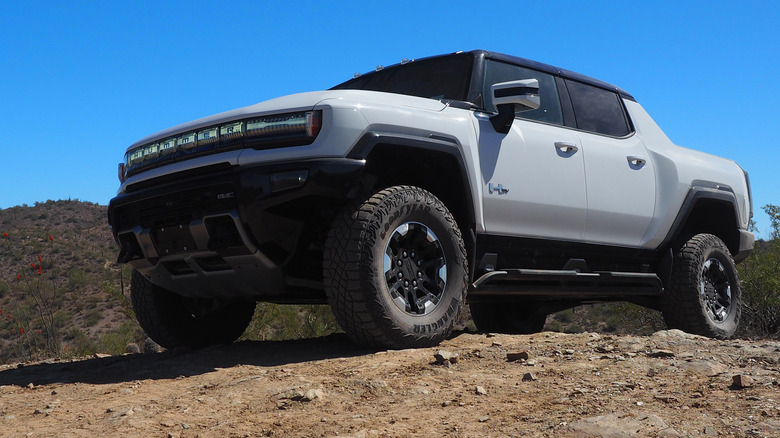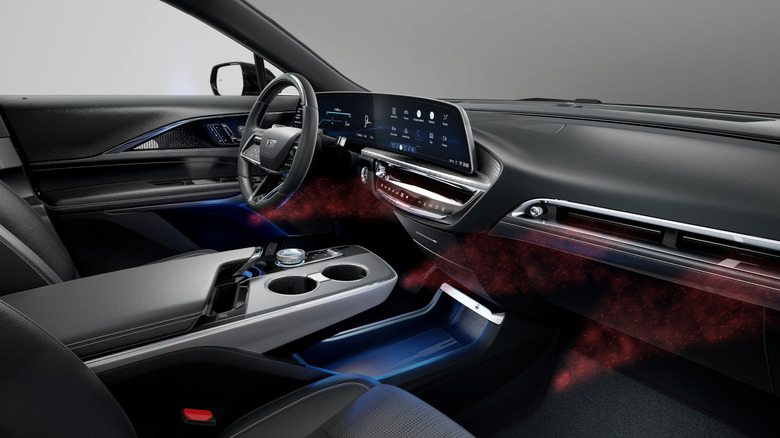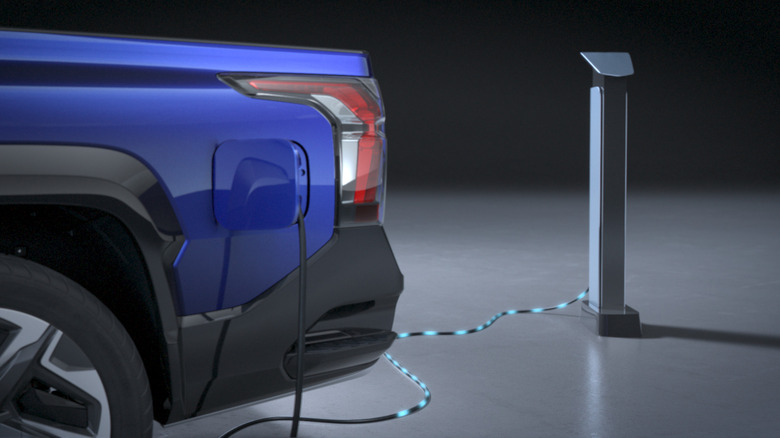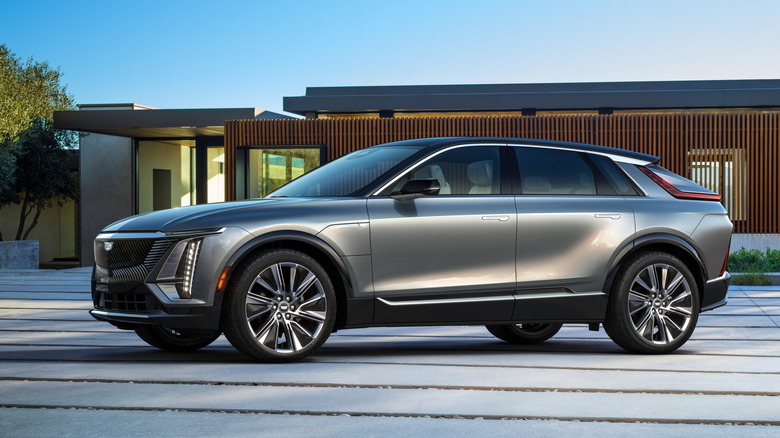GM Reveals Its Secret Weapon To Fix Drivers' Two Big Electric Car Frustrations
A big battery isn't the only way to maximize electric vehicle range, and GM is pulling back the curtain on one of its key Ultium BEV platform technologies ahead of the Cadillac Lyriq going on sale in mid-May. Subject of 11 patents, according to the automaker, the Ultium energy recovery system makes repurposing heat its priority and, in the process, can — so General Motors says – contribute up to 10% more range by avoiding what other EVs would waste. It should help keep charging times down and reduce the amount of battery power wasted on keeping the cabin warm or cool.
Heat pumps are increasingly a part of the modern electric vehicle, designed to help pull heat from ambient conditions and use that to warm the batteries and other systems. GM's new system goes further than that, however. It can not only tap heat from outside and inside of the EV, but also recover and store waste heat generated by the Ultium propulsion system itself.
"We run a system that is capable of both heating and cooling the cabin," Lawrence Ziehr, project manager of Ultium energy recovery capabilities, explains. "At the same time it's also heating and cooling batteries, propulsion, it's all one system."
Trimming out the duplication
Until now, GM has been using a more complex arrangement of heaters and coolers on electric cars like the Chevrolet Bolt EUV. That was arguably easier overall, but it came with compromises: not least weight and cost from the duplicated components.
The Ultium system, in contrast, strips out the redundancy. That makes it more complicated, but it also trims mass and, because of the absence of duplicates, cost too. "It's just a smarter way of connecting the systems," Ziehr explains. "There are some mass advantages with the system ... Overall, I'd say it's neutral."
Effectively, the energy recovery system interlinks multiple cooling loops — including around the batteries, electric motors, cabin HVAC, and other components — with an individually controllable valve array. In the GMC Hummer EV's "Watts to Freedom" launch control mode, for example, the system will warm the batteries for maximum energy performance, but also cool the motors. That's what allows the vast electric truck to hit 0-60 mph in just 3.0 seconds.
A smarter, more efficient EV
Even if you're not looking to rearrange your internal organs with excessive G-forces, GM's new technology serves up benefits in day to day driving. For peak charging speeds, for example, the batteries need to be warm. Rather than use their own power to artificially heat them, Ultium can channel that energy from elsewhere and precondition the pack before you reach your next charger.
Alternatively, it could be used to heat or cool the cabin, or even more complex arrangements where the battery pack itself is used as a huge thermal store. "It's a thousand pound battery on some vehicles," Ziehr points out, explaining that it can be intentionally allowed to get hotter than usual, "so you can use the heat capacity in it. Now you can extra that thermal energy to use on the [cabin] comfort, and use all the cells for range."
Standard, not an expensive option
Unlike rival heat-pump systems, which begin to lose effectiveness at lower ambient temperatures, Ultium's promises to keep on going even down to -30 degrees Centigrade (-22 degrees Fahrenheit). Because of the way it's interlinked, in fact, GM can even give the system a little internal heat bump to make it more efficient in extreme cold temperatures. The result isn't just impressive in EV terms, but for vehicles overall. "We can heat the cabin of our EVs more quickly in cold weather than our comparable internal combustion vehicles," Ziehr says.
Equally important is the fact that GM isn't making this energy recovery system an expensive option. Instead, it'll be standard on every Ultium-based vehicle and, down the line, potentially outside of EVs too. After all, the automaker is looking at other ways it could apply its Ultium technologies beyond cars and trucks, and the heat system will go with that.
Although drivers will be able to manually choose to precondition the battery, for the most part all this heat management happens automatically and in the background. The upshot is more range than pure battery pack size might suggest: 329 miles for the Hummer EV, and 300+ miles for the Cadillac Lyriq. Deliveries of the former have already begun, while Cadillac will start taking Lyriq reservations from May 19, 2022.



